Not long ago, my friend Ruby Lee stated her admiration for women’s fashion designer and perfume maker Gabrielle “Coco” Chanel. Ruby is a smart person whose opinions I respect, so I went in search of information about Chanel. That’s not to say I was completely ignorant of this diminutive Frenchwoman whose life began in 1883 (she claimed 1893) and ended in 1971 when I was a senior in high school. Who has not heard of Chanel No. 5, far and away the most popular fragrance in the 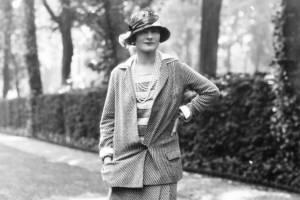 world? First developed in the early 1920s from a secret recipe of rose, jasmine, orris root, natural musks and aldehydes, its scent appealed to “respectable” women and flappers alike; a lady could wear it to church or while dirty dancing with strangers in a jazz club. Chanel, who always waited until the fifth of a month before putting her newest fashions before the world, believed the number 5 had mystical significance. Among the women she dressed were Gloria Swansen, Greta Garbo, Marlene Dietrich, Marilyn Monroe, Jackie Kennedy, Audrey Hepburn, Romy Schneider, Brigitte Bardot and Catherine Deneuve.
world? First developed in the early 1920s from a secret recipe of rose, jasmine, orris root, natural musks and aldehydes, its scent appealed to “respectable” women and flappers alike; a lady could wear it to church or while dirty dancing with strangers in a jazz club. Chanel, who always waited until the fifth of a month before putting her newest fashions before the world, believed the number 5 had mystical significance. Among the women she dressed were Gloria Swansen, Greta Garbo, Marlene Dietrich, Marilyn Monroe, Jackie Kennedy, Audrey Hepburn, Romy Schneider, Brigitte Bardot and Catherine Deneuve.
She came from near the bottom of French society as it stood in the late 19th century (dad sold used clothes, mom was a washerwoman) and was consigned to an orphanage for six years. That’s where she learned the humble art of sewing—but also something about style. Chanel just had a sense of what did and did not look good on a woman. Once outside the walls, she moonlighted by singing for soldiers (and 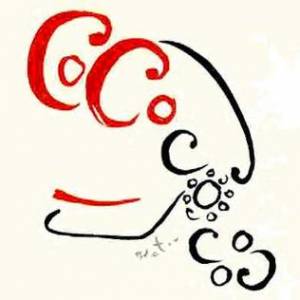 dabbling in prostitution). Although she had a passable voice, it was soon clear that her future was not on the stage but designing women’s clothes, hats, bags and jewelry, along with that heady perfume. Her interlocking “CC” brand epitomized haute couture in France and really, the entire Western world.
dabbling in prostitution). Although she had a passable voice, it was soon clear that her future was not on the stage but designing women’s clothes, hats, bags and jewelry, along with that heady perfume. Her interlocking “CC” brand epitomized haute couture in France and really, the entire Western world.
A celebrity by the mid-1920s, Chanel had affairs with textile heir Étienne Balsan, Igor Stravinsky, Pablo Picasso and the Duke of Westminster, among many others. Never pretending to be a feminist, she was happy to glom onto powerful men. None was more important than Pierre Wertheimer, head of a rich Jewish family in Paris. He set up and operated the businesses that produced, marketed and sold those clothes and fragrances, making her quite wealthy. A vociferous anti-Semite, she often complained about Wertheimer and accused him of ripping her off, although her accountant could prove it was not true.
This chain-smoking, morphine-injecting woman had a dark past. I refer to her being a traitor and spy for the Nazis during World War II and copulating with a Gestapo officer named Hans Gunther von Dincklage. They shared a suite at the Ritz Hotel, headquarters for the German army in France. While other Parisians had to endure rationing, she was living it up at fancy dinner parties and having fun. Chanel joined the Nazi military intelligence division, the Abwehr, and was given agent number F-7124. Her main action on behalf of “the Boche” was a hopeless effort in 1943 and 1944 to contact her old friend Winston Churchill, seeking to arrange favorable peace terms. This was done without Adolf 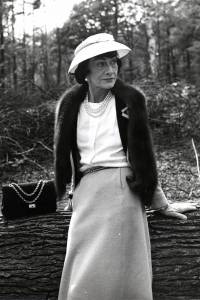 Hitler’s permission as the Führer continued to think his Aryan soldiers would prevail. Deutschland über alles, and all that. Churchill refused to see her, but he came through after the German surrender on May 7, 1945. He made sure she got favorable treatment from Allied soldiers. Despite being arrested, Chanel was released after a few hours of gentle questioning.
Hitler’s permission as the Führer continued to think his Aryan soldiers would prevail. Deutschland über alles, and all that. Churchill refused to see her, but he came through after the German surrender on May 7, 1945. He made sure she got favorable treatment from Allied soldiers. Despite being arrested, Chanel was released after a few hours of gentle questioning.
Perhaps you know what happened to many Frenchwomen who were suspected of having engaged in sexual liaisons with Germans in the war years. They were shorn of their hair, painted with swastikas and paraded down the street, to the jeers and taunts of neighbors. The unlucky ones were stripped to their undies, some completely naked. Most of those women came from the lower classes and did not have rich and aristocratic protectors as did Coco Chanel.
Called as a witness in the 1949 collaboration trial of fellow Abwehr agent Louis de Vaufreland, she lied through her teeth about her own involvement. The judge, Fernand Paul LeClercq, saw the holes in her testimony but chose to ignore them. He may have been 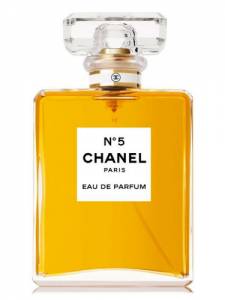 following the dictates of Charles de Gaulle who felt it was important to maintain the façade that all of France’s intellectual and artistic elite had stood firm against the Nazis. But there is abundant evidence that Maurice Chevalier, Edith Piaf and Léonie Marie Julie Bathiat (also known as “Arletty”)—and, of course, Chanel—were culpable to varying degrees. Following were decades of ambiguity and denial about what had really happened in the early 1940s.
following the dictates of Charles de Gaulle who felt it was important to maintain the façade that all of France’s intellectual and artistic elite had stood firm against the Nazis. But there is abundant evidence that Maurice Chevalier, Edith Piaf and Léonie Marie Julie Bathiat (also known as “Arletty”)—and, of course, Chanel—were culpable to varying degrees. Following were decades of ambiguity and denial about what had really happened in the early 1940s.
Chanel took up residence in a Swiss chateau and was joined, shamelessly, by Dincklage. They kept a low profile for a few years and returned to Paris (the Ritz, in fact) in 1953. Never seeing a need to apologize or explain, she used her wiles to get back to the top of the fashion world.
The subject of more than 80 books, three movies and a Broadway musical (Coco, starring Katherine Hepburn), she certainly has a complex legacy. There’s plenty to dislike about her. I am not aware of Chanel ever expressing concern, much less sorrow or indignation about the 72,500 French Jews who were killed in Nazi death camps. Nonetheless, I went with my girlfriend today to a high-dollar mall in Seoul’s Jamsil district and bought her a bottle of Chanel No. 5.

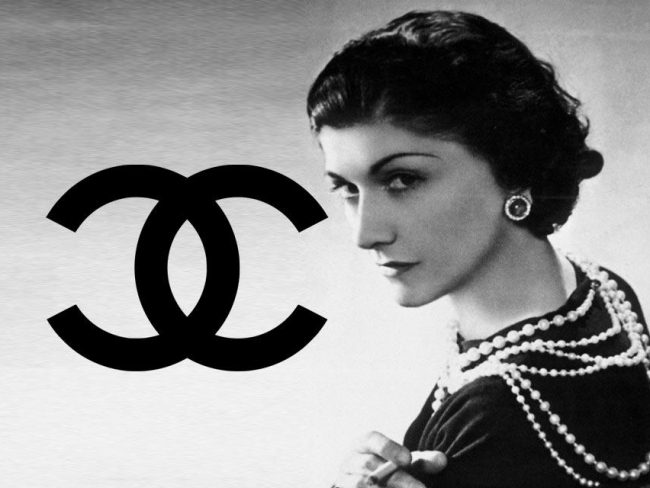
11 Comments
Sir Richard, what a life history of Gabrielle “Coco Chanel .A very intriguing story.
You made your beautiful girlfriend so happy & loved.
She was intriguing, Renalie….in some ways I admire her, in some ways I do not. GF is happy with her new perfume, though!!
Richard, reading about Coco makes me remember another femme fatale, Mati Hari, who was active in WWI with the same double agent shenagans. The Frenches thought less of her spying then since she was captured, tried and executed by firing squad in Oct 1917. Makes me wonder what changed their sentiments in 1946 at Coco’s trial. What if Charles DeGaulle recalled this execution/trial such that he felt this swelling national pride and national level of forgive and forget sentiments such that he influenced the judge presiding over Coco’s case to be lenient. Obviously, I am speculating. BTW, DeGaulle was not part of the decision to execute Hari because at the time of her execution, he was a soldier imprisoned in a NAZI POW camp during WWI. What if instead, they had executed Coco using the same logic as was present at the end of WWI, then your GF wouldn’t have her bottle of N0. 5. As we know, one man can change history. We see it all the time. Great info.
Gary: There is an anecdote I wanted to include but could not find the right place. It is as follows. On liberation day in Paris, Chanel went to her store and started giving out free bottles of Chanel No. 5, one to every American GI… she was buying good will because she knew she would need it.
Richard:
Great detail and research in your account of Coco. I would think a popular magazine would consider publishing it. I’ve loved your most recent essays especially those involving Texas football.
Rex
Thank you, my dear sir. Speaking of Texas football, I have a topic in mind for another article. You will see it soon!
Wow! What an amazing life story of Coco chanel just like her perfume scents.
“I don’t care what you think of me. I don’t think of you at all.” By Coco Chanel.
Andrea: Is that what she said?? If so, very indicative.
I was given a sample of channel #5 when i went to the US recently and i agree , it smells so good, young and old will really love it! I am glad to have known the story behind. Now this made me appreciate and value such fragrance more!
The most famous scent in the world….
My father told me a story about Chanel that occurred in the 30’s. There was an airshow and she contracted with a famous pilot (I can’t recall his name) to fly over the crowd and using a crop duster, spray the crowd with her perfume. The pilot apparently didn’t care much for her, so her urinated in the spray tank and proceeded to spray the audience. His mistake was telling several people what he did. She got “pissed off” at the pilot, sued him and won.
Add Comment